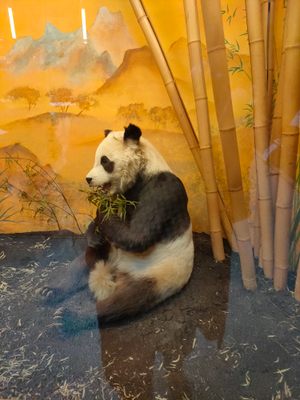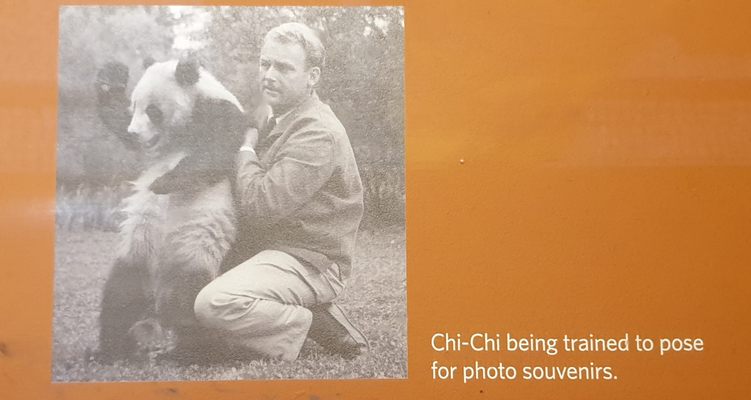About
In the early 1950s, a farmer caught a panda cub in the county of Baoxing, a part of the province of Sichuan, China. News of the cub's capture reached the ears of local communist officials, and soon the rare creature was making the long journey to Peking (now known as Beijing) to be exhibited in the national zoo.
The cub was christened Chi-Chi by her keepers, which translates as "Naughty Little Girl" in Mandarin. Chi-Chi was a crowd favorite. But in 1957, Maoist China's then-ally, the Soviet Union, made a request for a panda to be exhibited in the Moscow Zoo, and Chi-Chi was sent away.
The Moscow Zoo hoped Chi-Chi would help them establish a captive breeding program. But Chi-Chi and An-An, the zoo’s male panda, refused to mate. Chi-Chi was subsequently returned to China, and was then purchased by a German zoo and sent to what was then East Germany.
Chi-Chi didn't remain long in East Berlin before she was purchased by the Brookfield Zoo in the United States. However, before she could make the journey to America, the U.S. Treasury Department declared a trade embargo on China, meaning she was denied entry into the country.
As a consequence of being the only giant panda in Western Europe, plans were made for Chi-Chi to tour several countries’ zoos. The London Zoo decided to purchase Chi-Chi and give her a permanent home. The panda became an animal celebrity and was studied by notable zoologists.
Chi Chi died in 1972 at the somewhat young (for a captive panda) age of 18 due to an unexpected illness. Her remains were preserved for posterity, and she was put on display at the Natural History Museum.
Related Tags
Know Before You Go
The Natural History Museum is open every day from 10 a.m. to 5:50 p.m. and entrance is free. Chi-Chi is located in the museum's Central Cafe, off Hintze Hall, where you can grab a coffee, tea, or a bite to eat and ponder pandas.
Chi Chi is in a glass case on the right at the back.
Community Contributors
Added By
Published
September 20, 2019














































